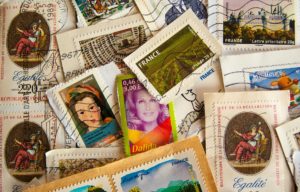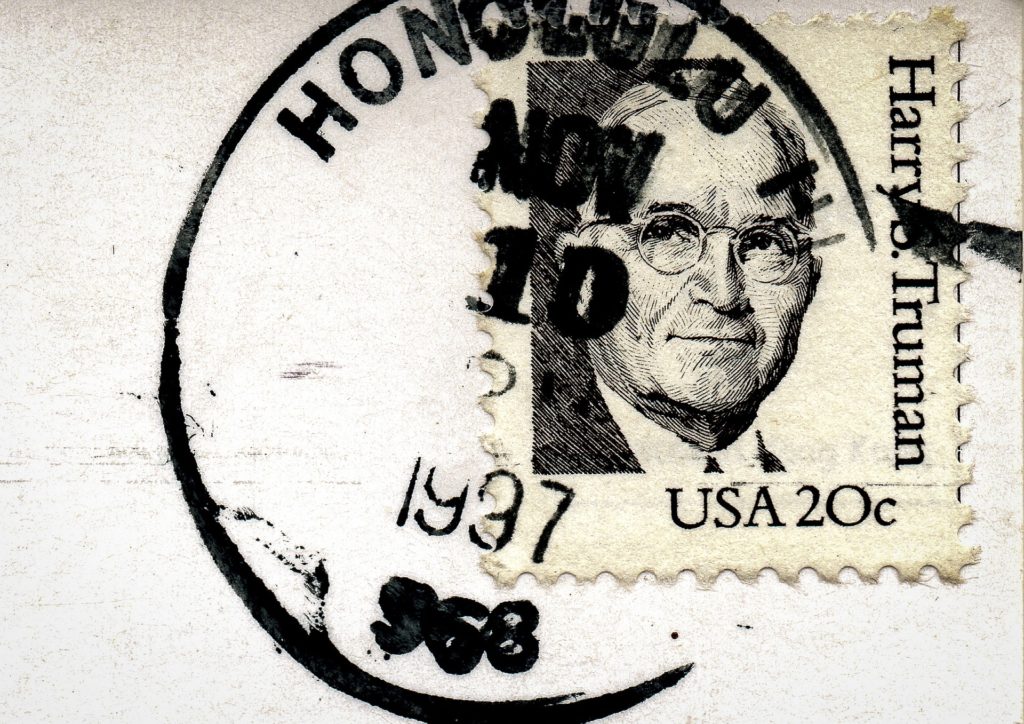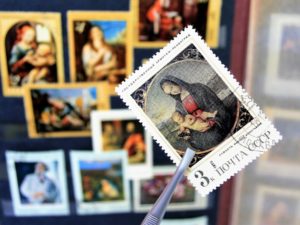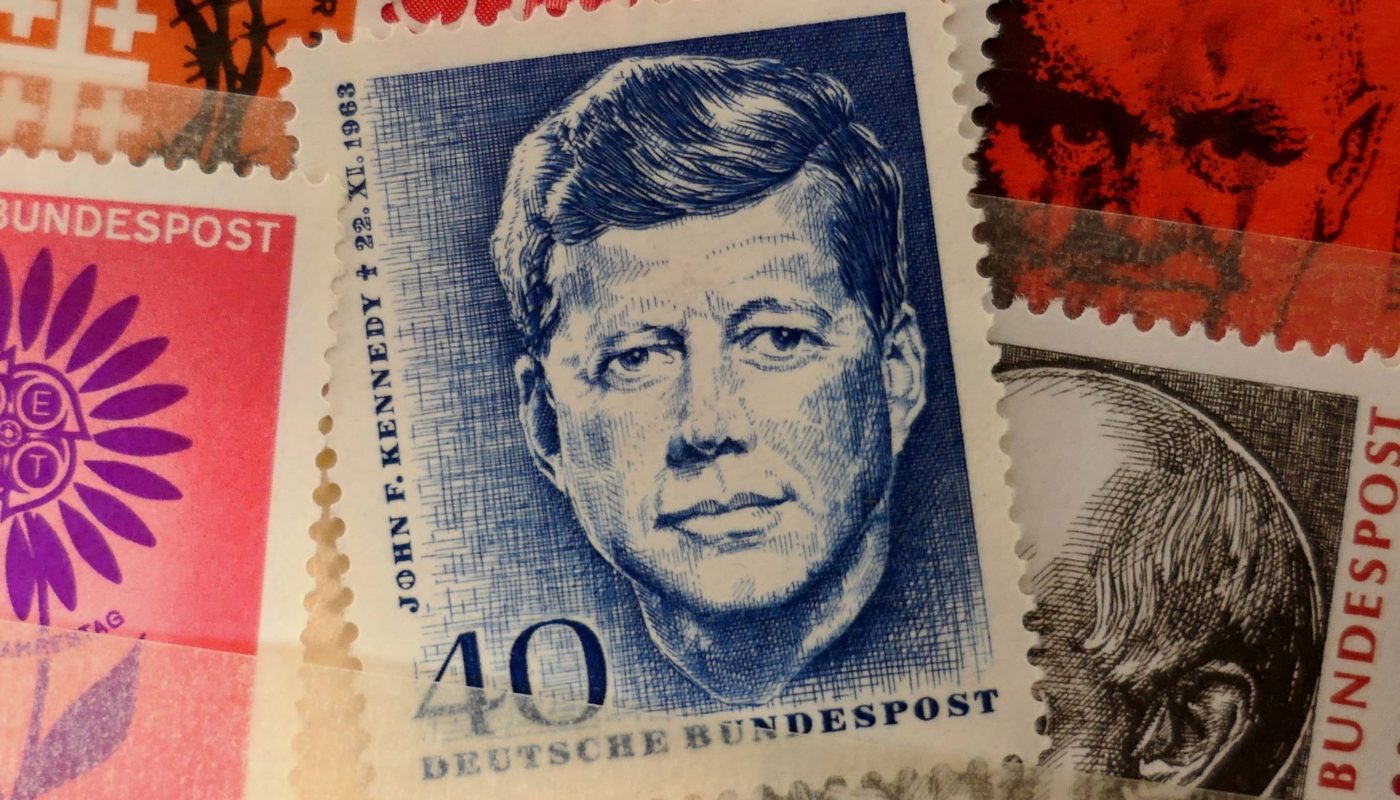Collecting stamps is a hobby that anyone can start. If you are just beginning to collect, you may want to start an album to with whatever stamps look interesting to you. A more serious stamp collector will examine defects, types and cancellations of various stamps. This is a hobby that doesn’t require any particular skills and can be done anytime, from anywhere, but there are advantages to knowing a thing or two if you’re interested in building an impressive (and expensive) stamp collection.
A stamp collector or philatelist will collect material relating to the postage and carriage of mail. Stamps are the main focus for collectors, but there are other items of note. Some collectors collect markings, labels, envelopes and covers. Some even collect revenue stamps or Christmas Seals.
Why Collect Stamps?

There are numerous reasons to get into stamp collecting, and the reason you decide to pursue this hobby is going to greatly inform how you go about it. For many collectors, it’s just about simple relaxation and having some items they find intriguing with a hint of historical value to them. Stamps are just fun to look at, and often feature all sorts of wonderful images. So, in one sense, philately can be a purely artistic endeavor without much concern about the value (or potential value) of one’s inventory.
However, if you’re looking to stamp collecting as a fun way to invest for your future (or your grandchildren’s future), then you’re going to want to be a lot more discerning in your approach. Keep in mind, you’ll probably be better off putting your money in stocks & bonds, but where’s the fun in that?
Finally, stamp collecting is a great hobby for people who love history and geography. Many stamps often commemorate important events, and collecting stamps from around the world is a fun way to learn about how different mail systems work across the globe. People who get into the hobby for the geeky side of stamp collecting will likely spend a lot more time not only researching individual stamps, but getting lost in the rabbit holes each stamp offers as you dig into the historical, economic and political contexts surrounding it.
Getting Your First Stamps
There are several ways to go about getting stamps, and the methods that work best for you depend heavily on your particular interests in stamp collecting. If you’re looking to acquire expensive pieces, then you’re going to have to look for opportunities to buy off the second-hand market. You can often find stamps listed on eBay and even Craigslist, but there are also marketplaces that deal exclusively in stamps such as HipStamp and the American Philatelic Society.
But if you’re not ready to start investing big money in stamps, a good way to start is with what’s currently available at your local Post Office and what’s coming to you personally in the mail. You may also reach out to neighbors or friends and ask if they wouldn’t mind letting you have their discarded envelopes so you can collect the stamps from them. Businesses are a particularly good target, so if you know anyone who owns a small business or is an office manager or secretary, ask them.
You can also find stamps and related memorabilia for sale at specialty shops and hobby stores. These will have plenty of low-cost starter stamps to kick off your collection, and many will have more expensive and rarer stamps to consider too. Even if you’re not ready to make the plunge on those, it can be a great way to check potential pieces out in person and get a feel for the game. It’s certainly much more intimate than browsing listings online, and you can even try haggling!
Should Stamps be New or Used?
There’s no right or wrong answer and it mostly comes down to personal preference. In terms of value, mint stamps (never used) are typically worth more but this isn’t always the case. Supply and demand applies to the world of philately, just as anything else. For some stamps, it might be a simple matter to find sheets of unused stamps, but finding a used stamp (from that same time period) could be a daunting challenge.
Used stamps will bear some kind of marking to signify that they’ve been used. This is called a “cancel”. For some collectors, there is sentimental value in knowing that the stamp traveled the world sending something of importance from one person to another. Still, you’ll find plenty of collectors who prefer mint condition stamps. You may also find and collect used stamps still on the envelope. In some cases, the envelope itself might add some extra value to it because of the particular circumstances of the correspondence, but a stamp on the envelope of a modern utility bill is not likely to do much for the stamp’s story (at least not for another century or two).
So, you should think about whether you have a preference and do what works for you. The good news is there are no rules that say you have to stick to only one kind of collection.
Stamp Clubs and Pen Pals
If you plan on starting a collection of modern stamps, one great way of expanding your collection is by having pen pals around the world to exchange stamps with. You can even find stamp clubs online specifically for this purpose. Some clubs will buy local stamps and send them mint to each other, and some put the stamps on the letters they’re exchanging. The latter makes for a much more personal collection and when you’re looking back on your stamps in your old age, they’ll always have a strong connection to the person you corresponded with to acquire it.
The other great thing about stamp clubs is that you can meet up and trade stamps from your collection. You’ll likely get duplicates if you’re pulling from what’s currently in circulation, and having someone to trade with can make use of those duplicates by winning you over some stamps you don’t yet have in a good trade. Plus, other stamp collectors are a great source of information and guidance!
Stamp Collecting Terminology
As far as most hobbies go, stamp collecting is probably one of the more easy ones to understand the lingo. There aren’t a lot of philately-specific terms or strange acronyms to learn. Most of the words used in stamp collecting, you’ve probably already heard of and all you need to understand is how they apply to the world of stamps.

Gum: This refers the adhesive on the back of stamps that makes it stick to the envelope.
Cancellation: A cancellation, or a cancel, is a marking done by a post office to signify that the stamp has been used. This prevents the stamp from being used again as postage.
Condition: There are three main conditions for stamps. Mint refers to stamps that are unused and in good condition, their gum still intact. When a stamp is unused but not in mint condition, it is simply referred to as unused. Used refers to a loose stamp that has a cancellation and no gum, since the stamp has been used and since removed from its envelope. Finally, cover refers to a stamp still affixed to an envelope/postcard, as well as referring to the envelope/postcard itself.
Watermark: Many stamps have watermarks built into them as an anti-counterfeiting measure, similar to paper currency. The watermark can usually be seen by holding the stamp up to light, but may require special watermark-detecting liquid.
Postmark: A postmark contains information about when and where a letter was sent out, and sometimes this mark serves as a cancellation mark too.
Tongs: Avid collectors will likely have a pair of stamp tongs, which are special tweezers designed for handling stamps. This helps prevent damage and contamination when dealing with stamps.
Philately: You’ve already seen this word used a bit in this guide, and it’s simply the study of stamps or other post-related things. Not all philatelists necessarily collect stamps, since you can study stamps or post without collecting items. Within the stamp collecting community, you’ll usually find “philately” as a preferred term since “stamp collecting” is more colloquial, but stamp collecting is more specific and accurate to the particular hobby.
Stamp Collecting Tools

Storage and Display: There are many options for displaying and storing your collection. Simple plastic storage bins work great if you’re just looking to store what you have without much need for organization. You can use things like index cards and plastic baggies to further organize if you need. For displaying, you might want to get a simple binder and buy pages for it based on how you want to lay out your collection. Be sure to use acid-free paper. If you want to display something on your wall, then get some stamp mounts to insert them in and then stick the mounts inside any basic artwork/scrapbook frame.
Removing Stamps: Most stamps can be easily removed from their envelopes by soaking in cold water for about 10 to 15 minutes. Be careful with stamps that have markings as the ink might bleed, so be sure to soak them separately.
Pen Pal Supplies: If you’re joining a stamp club or plan on trading stamps with fellow stamp-enthusiasts, then get yourself a good felt-tip pen (or two!) to write handwritten notes with. You’ll also want to buy basic envelopes and be on the lookout for a variety of fun postcards. Postcards are collectible items too, you know!
Magnifying Glass: Stamps are usually small, so make sure you get a good magnifying glass to really get a good view of the stamp’s image. As you gain more knowledge in philately, a magnifying glass will also come in handing when inspecting stamps for defects and special markings.

